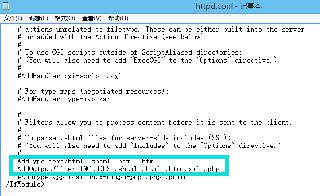Java SPI的簡(jiǎn)單小實(shí)例
JDK有個(gè)ServiceLoader類,在java.util包里,支持按約定目錄/META-INF/services去找到接口全路徑命名的文件,讀取文件內(nèi)容得到接口實(shí)現(xiàn)類的全路徑,加載并實(shí)例化。如果我們?cè)谧约旱拇a中定義一個(gè)接口,別人按接口實(shí)現(xiàn)并打包好了,那么我們只需要引入jar包,通過(guò)ServiceLoader就能夠把別人的實(shí)現(xiàn)用起來(lái)。舉個(gè)例子,JDK中的JDBC提供一個(gè)數(shù)據(jù)庫(kù)連接驅(qū)動(dòng)接口,不同的廠商可以有不同的實(shí)現(xiàn),如果它們給的jar包里按規(guī)定提供了配置和實(shí)現(xiàn)類,那么我們就可以執(zhí)行不同的數(shù)據(jù)庫(kù)連接操作,比如MySql的jar包里就會(huì)有自己的配置:

這里文件名就是接口:

文件內(nèi)容是實(shí)現(xiàn)類:

我們自己實(shí)現(xiàn)一個(gè)簡(jiǎn)單例子,不需要打jar包,把目錄放到spring boot的resources下即可,這里就是classpath,跟你放jar包里效果一樣。
1、定義一個(gè)接口:
package com.wlf.service;public interface ITest { void saySomething();}
2、定義兩個(gè)實(shí)現(xiàn):
package com.wlf.service.impl;import com.wlf.service.ITest;public class ITestImpl1 implements ITest { @Override public void saySomething() { System.out.println('Hi, mia.'); }}
package com.wlf.service.impl;import com.wlf.service.ITest;public class ITestImpl2 implements ITest { @Override public void saySomething() { System.out.println('Hello, world.'); }}
3、按預(yù)定新增/META-INF/services/com.wlf.service.ITest文件:
com.wlf.service.impl.ITestImpl1com.wlf.service.impl.ITestImpl2

4、定義一個(gè)執(zhí)行類,通過(guò)ServiceLoader加載并實(shí)例化,調(diào)用實(shí)現(xiàn)類方法,跑一下:
package com.wlf.service;import java.util.Iterator;import java.util.ServiceLoader;public class TestServiceLoader { public static void main(String[] args) { ServiceLoader<ITest> serviceLoader = ServiceLoader.load(ITest.class); Iterator<ITest> iTests = serviceLoader.iterator(); while (iTests.hasNext()) { ITest iTest = iTests.next(); System.out.printf('loading %sn', iTest.getClass().getName()); iTest.saySomething(); } }}
打印結(jié)果:

ServiceLoader源碼比較簡(jiǎn)單,可以看下上面我們使用到的標(biāo)黃了的方法:
/** * Lazily loads the available providers of this loader’s service. * * <p> The iterator returned by this method first yields all of the * elements of the provider cache, in instantiation order. It then lazily * loads and instantiates any remaining providers, adding each one to the * cache in turn. * * <p> To achieve laziness the actual work of parsing the available * provider-configuration files and instantiating providers must be done by * the iterator itself. Its {@link java.util.Iterator#hasNext hasNext} and * {@link java.util.Iterator#next next} methods can therefore throw a * {@link ServiceConfigurationError} if a provider-configuration file * violates the specified format, or if it names a provider class that * cannot be found and instantiated, or if the result of instantiating the * class is not assignable to the service type, or if any other kind of * exception or error is thrown as the next provider is located and * instantiated. To write robust code it is only necessary to catch {@link * ServiceConfigurationError} when using a service iterator. * * <p> If such an error is thrown then subsequent invocations of the * iterator will make a best effort to locate and instantiate the next * available provider, but in general such recovery cannot be guaranteed. * * <blockquote style='font-size: smaller; line-height: 1.2'><span * style='padding-right: 1em; font-weight: bold'>Design Note</span> * Throwing an error in these cases may seem extreme. The rationale for * this behavior is that a malformed provider-configuration file, like a * malformed class file, indicates a serious problem with the way the Java * virtual machine is configured or is being used. As such it is * preferable to throw an error rather than try to recover or, even worse, * fail silently.</blockquote> * * <p> The iterator returned by this method does not support removal. * Invoking its {@link java.util.Iterator#remove() remove} method will * cause an {@link UnsupportedOperationException} to be thrown. * * @implNote When adding providers to the cache, the {@link #iterator * Iterator} processes resources in the order that the {@link * java.lang.ClassLoader#getResources(java.lang.String) * ClassLoader.getResources(String)} method finds the service configuration * files. * * @return An iterator that lazily loads providers for this loader’s * service */ public Iterator<S> iterator() { return new Iterator<S>() { Iterator<Map.Entry<String,S>> knownProviders= providers.entrySet().iterator(); public boolean hasNext() {if (knownProviders.hasNext()) return true;return lookupIterator.hasNext(); } public S next() {if (knownProviders.hasNext()) return knownProviders.next().getValue();return lookupIterator.next(); } public void remove() {throw new UnsupportedOperationException(); } }; }
我們用到的迭代器其實(shí)是一個(gè)Map:
// Cached providers, in instantiation order private LinkedHashMap<String,S> providers = new LinkedHashMap<>();
它用來(lái)緩存加載的實(shí)現(xiàn)類,真正執(zhí)行的是lookupIterator:
// The current lazy-lookup iterator private LazyIterator lookupIterator;
我們看下它的hasNext和next方法:
public boolean hasNext() { if (acc == null) {return hasNextService(); } else {PrivilegedAction<Boolean> action = new PrivilegedAction<Boolean>() { public Boolean run() { return hasNextService(); }};return AccessController.doPrivileged(action, acc); } } public S next() { if (acc == null) {return nextService(); } else {PrivilegedAction<S> action = new PrivilegedAction<S>() { public S run() { return nextService(); }};return AccessController.doPrivileged(action, acc); } }
private boolean hasNextService() { if (nextName != null) {return true; } if (configs == null) {try { String fullName = PREFIX + service.getName(); if (loader == null) configs = ClassLoader.getSystemResources(fullName); else configs = loader.getResources(fullName);} catch (IOException x) { fail(service, 'Error locating configuration files', x);} } while ((pending == null) || !pending.hasNext()) {if (!configs.hasMoreElements()) { return false;}pending = parse(service, configs.nextElement()); } nextName = pending.next(); return true; } private S nextService() { if (!hasNextService())throw new NoSuchElementException(); String cn = nextName; nextName = null; Class<?> c = null; try {c = Class.forName(cn, false, loader); } catch (ClassNotFoundException x) {fail(service, 'Provider ' + cn + ' not found'); } if (!service.isAssignableFrom(c)) {fail(service, 'Provider ' + cn + ' not a subtype'); } try {S p = service.cast(c.newInstance());providers.put(cn, p);return p; } catch (Throwable x) {fail(service, 'Provider ' + cn + ' could not be instantiated', x); } throw new Error(); // This cannot happen } public boolean hasNext() { if (acc == null) {return hasNextService(); } else {PrivilegedAction<Boolean> action = new PrivilegedAction<Boolean>() { public Boolean run() { return hasNextService(); }};return AccessController.doPrivileged(action, acc); } }
hasNext查找實(shí)現(xiàn)類,并指定了類路徑:
private static final String PREFIX = 'META-INF/services/';
具體查找操作看這里:
pending = parse(service, configs.nextElement());
next則是實(shí)例化加載到的實(shí)現(xiàn)類,使用反射Class.forName加載類、newInstance實(shí)例化對(duì)象。
以上就是Java SPI的簡(jiǎn)單小實(shí)例的詳細(xì)內(nèi)容,更多關(guān)于Java SPI實(shí)例的資料請(qǐng)關(guān)注好吧啦網(wǎng)其它相關(guān)文章!
相關(guān)文章:
1. ASP動(dòng)態(tài)網(wǎng)頁(yè)制作技術(shù)經(jīng)驗(yàn)分享2. 詳解瀏覽器的緩存機(jī)制3. vue3+ts+elementPLus實(shí)現(xiàn)v-preview指令4. jsp文件下載功能實(shí)現(xiàn)代碼5. 如何在jsp界面中插入圖片6. Xml簡(jiǎn)介_(kāi)動(dòng)力節(jié)點(diǎn)Java學(xué)院整理7. .Net Core和RabbitMQ限制循環(huán)消費(fèi)的方法8. phpstudy apache開(kāi)啟ssi使用詳解9. jsp實(shí)現(xiàn)登錄驗(yàn)證的過(guò)濾器10. JSP之表單提交get和post的區(qū)別詳解及實(shí)例

 網(wǎng)公網(wǎng)安備
網(wǎng)公網(wǎng)安備